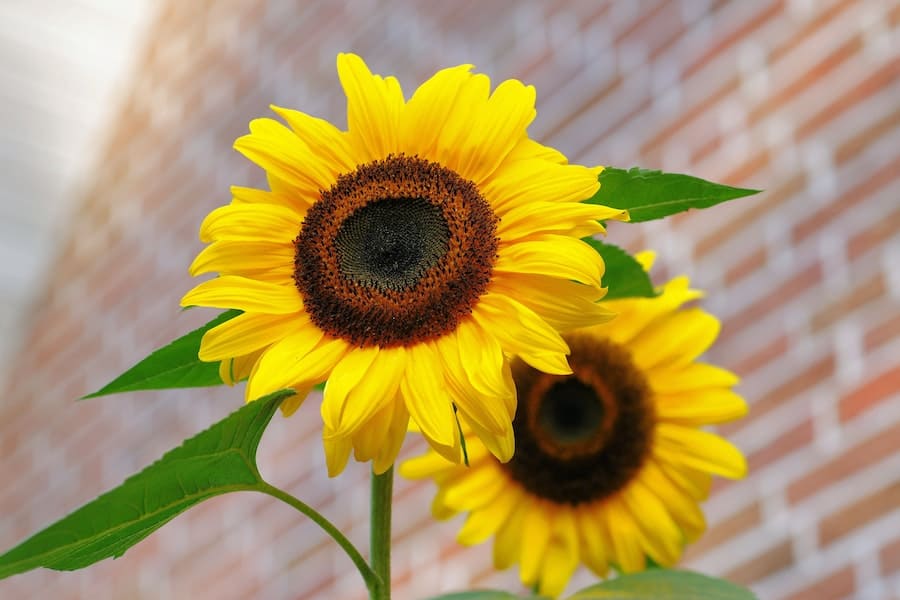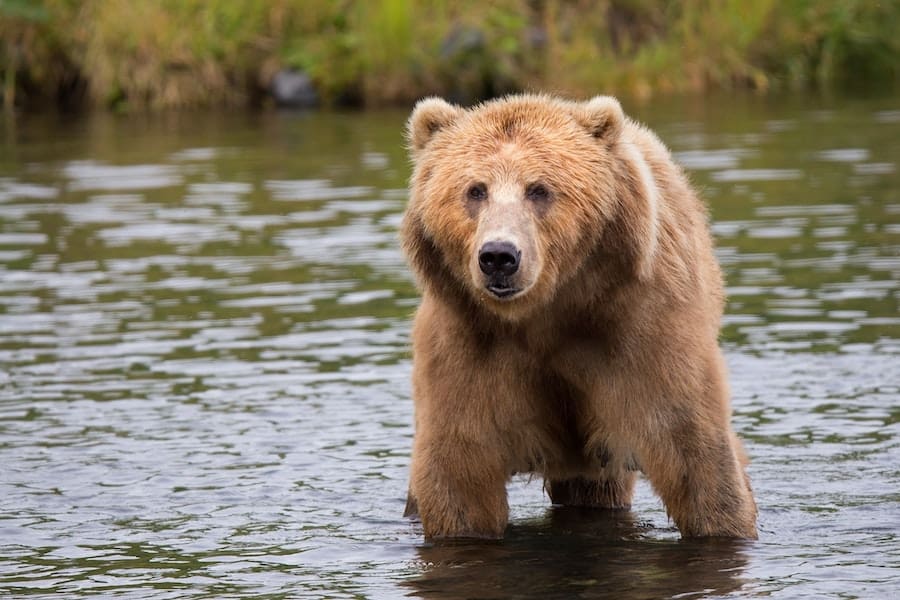Sunflowers, with their radiant golden petals and towering stems, have long captivated the hearts of nature enthusiasts and gardeners alike. As one of the most iconic and recognizable flowers, they carry a deep historical and cultural significance. But amid their allure, a common question often arises: “Do sunflowers come back every year?” In this article, we embark on an exploration of the captivating lifecycle of sunflowers and uncover the truth behind their perennial nature. By understanding the factors that influence their return, we can revel in the joy of witnessing these stunning blooms grace our gardens year after year.
Do Sunflowers Come Back Every Year?
Yes, sunflowers can come back every year, but it depends on the type of sunflower you have. Sunflowers are generally categorized into two groups: annuals and perennials. Annual sunflowers complete their entire lifecycle in one growing season, meaning they grow from seed, bloom, produce seeds, and then die within a year. On the other hand, perennial sunflowers can return year after year. They go through a dormant phase during the winter and then sprout anew when the growing conditions become favorable in the following season. If you want sunflowers to return each year, consider planting perennial varieties, and provide them with proper care and maintenance to ensure their survival and future blooms.
The Lifecycle Of Sunflowers
The lifecycle of sunflowers is a fascinating journey that encompasses various stages of growth, from tiny seeds to towering blooms. Understanding this lifecycle helps us appreciate the beauty and resilience of these captivating flowers. Here are the key stages in the lifecycle of sunflowers:
Germination: The journey begins with the planting of sunflower seeds. These seeds are typically large, flat, and oval-shaped. When provided with adequate moisture, warmth, and sunlight, the seeds germinate, and a tiny root emerges, anchoring the seedling to the soil.
Seedling Stage: As the root establishes itself, the first leaves, called cotyledons, appear above the soil surface. These initial leaves provide the young sunflower with its initial nutrients. Soon after, true leaves emerge, and the seedling develops its characteristic heart-shaped leaves.
Vegetative Growth: During this stage, the sunflower continues to grow and develop its stem and leaves. The plant channels its energy into establishing a solid root system and sturdy stem, preparing for the next phase of its lifecycle.
Reproductive Stage: As the sunflower matures, it enters the reproductive stage. Buds form at the top of the stem, and each bud contains the potential to become a stunning sunflower head. Once the buds develop fully, they open, revealing the mesmerizing yellow petals and the central disk composed of individual florets.
Flowering: The sunflower reaches its full glory during the flowering stage. Bees, butterflies, and other pollinators are attracted to bright yellow blooms and play a crucial role in cross-pollination. As the florets get pollinated, they produce seeds, which gradually mature and become the familiar edible sunflower seeds.
Seed Production: As the flowers fade and the petals drop, the sunflower head transforms into a seed head. A seed replaces each floret, encased within a protective outer shell called the seed coat. The seeds continue to develop and mature in the seed head.
Seed Dispersal and Dormancy: Once the seeds are fully matured, the sunflower disperses them. The seed head dries out and becomes brittle, allowing the seeds to fall to the ground or get carried away by the wind, animals, or birds. Some seeds might find their way to the soil and remain dormant throughout the winter, awaiting the arrival of the next growing season.
Winter Dormancy (Perennials): In the case of perennial sunflowers, the plant enters winter dormancy. During this phase, the sunflower conserves its energy and remains dormant to survive the cold and harsh conditions. When spring arrives, the perennial sunflower will send out new shoots from its root system, commencing another cycle of growth and bloom.
The Fascinating World Of Sunflowers
The fascinating world of sunflowers opens up a realm of beauty, diversity, and ecological importance. As a genus belonging to the family Asteraceae, sunflowers (Helianthus) encompass many species, each with unique characteristics and appeal. These magnificent flowers have captured people’s admiration across cultures and history, leaving an indelible mark on art, folklore, and agriculture.
One of the most distinguishing features of sunflowers is their striking appearance. These tall, erect plants boast large, vibrant blooms with a captivating golden-yellow hue, symbolizing warmth and positivity. The sunflower’s name derives from its apparent heliotropic behavior, as the flower head follows the sun’s path throughout the day, a trait known as “solar tracking.” This mesmerizing movement adds to their allure, making sunflowers a favorite subject of photographers and artists.
Beyond their aesthetic charm, sunflowers play a vital role in the environment. They are renowned for their ability to phytoremediation, meaning they can absorb and cleanse soil from contaminants and pollutants. Additionally, sunflowers attract a diverse array of pollinators, such as bees, butterflies, and birds, making them essential contributors to biodiversity and ecosystem health.
Sunflowers have also become deeply intertwined with human culture and history. Native to North America, they hold immense significance for indigenous communities who have used them for various purposes, including food, medicine, and ceremonial rituals. Later, when explorers brought sunflowers to other parts of the world, they gained widespread popularity, symbolizing hope, happiness, and resilience.
In agriculture, sunflowers are more than just ornamental plants; they serve as valuable crops. The sunflower seeds are a rich source of oil and are used in cooking, while their hulls can be utilized as animal feed. Moreover, sunflower oil has gained prominence as a healthy alternative due to its high content of unsaturated fats.
In this vast and captivating world of sunflowers, we find a perfect blend of beauty, ecological significance, and practical utility. Whether adorning gardens, fields, or the artistic canvas, sunflowers continue to enchant and inspire, reminding us of the extraordinary wonders that nature bestows upon us.
Factors Influencing Sunflower Longevity
Growing Zone And Climate:
Sunflowers thrive in specific climate conditions. They generally prefer total sun exposure, well-draining soil, and warm temperatures. The specific growing zone and climate of the region can significantly impact the success and longevity of sunflowers.
Soil Quality:
Sunflowers thrive in nutrient-rich soils. Soil with good drainage and organic matter supports healthy root development and plant growth. Poor soil quality can hinder their growth and reduce their lifespan.
Watering:
Adequate and consistent watering is essential, especially during the critical stages of germination and flowering. While sunflowers are relatively drought-tolerant once established, insufficient or irregular watering can lead to stunted growth and a shorter lifespan.
Pest And Disease Management:
Sunflowers can be susceptible to pests such as aphids, caterpillars, and birds that feed on their seeds. Effective pest and disease management can prevent damage and extend their longevity.
Competition:
Nearby plants and weeds can compete for nutrients and resources, affecting the health and longevity of sunflowers. Planting sunflowers with enough space between them and managing weed growth can promote their well-being.
Support And Staking:
Taller sunflower varieties may require support or staking to prevent bending or breaking of the stems. Proper support can prevent physical damage and prolong their lifespan.
Tips For Growing Sunflowers In Your Garden
Growing sunflowers in your garden can be a rewarding and enjoyable experience. These cheerful blooms can add a touch of brightness and beauty to any landscape. To ensure successful sunflower cultivation, consider the following tips:
- Select sunflower varieties that suit your garden’s size and location. Dwarf or more miniature varieties are ideal for containers and smaller spaces, while larger varieties can create a striking focal point in more extensive gardens.
- Sunflowers thrive in full sun, so choose a location in your garden that receives at least 6-8 hours of direct sunlight daily.
- Sunflowers prefer well-draining, nutrient-rich soil. Amend the soil with compost or well-rotted manure before planting to improve fertility and drainage.
- Plant sunflower seeds directly into the ground after the last frost date in your area. They are sensitive to transplanting, so it’s best to sow them directly where they will grow.
- Plant sunflower seeds about 1-2 inches deep, depending on the size of the seeds. Larger seeds can be planted deeper.
- Leave enough space between sunflowers for proper air circulation and growth. Depending on the variety, space them 1 to 3 feet apart.
- Keep the soil moist but not waterlogged during the germination and early growth stages. Once established, sunflowers are relatively drought-tolerant, but regular watering is still essential during dry spells.
- Sunflowers generally only require a little fertilizer if the soil is already enriched. However, if growth seems sluggish or the leaves show signs of nutrient deficiency, a balanced fertilizer can be applied sparingly.
Bottom Line
The bottom line is that growing sunflowers in your garden can be gratifying and successful if you follow some essential tips. Choose the suitable sunflower variety based on your garden’s size, location, and purpose. Ensure they receive plenty of sunlight and plant them in well-draining, nutrient-rich soil. Water consistently during germination and early growth and support taller varieties if needed. Mulching helps retain moisture and control weeds, while periodic deadheading can encourage continuous blooming.








